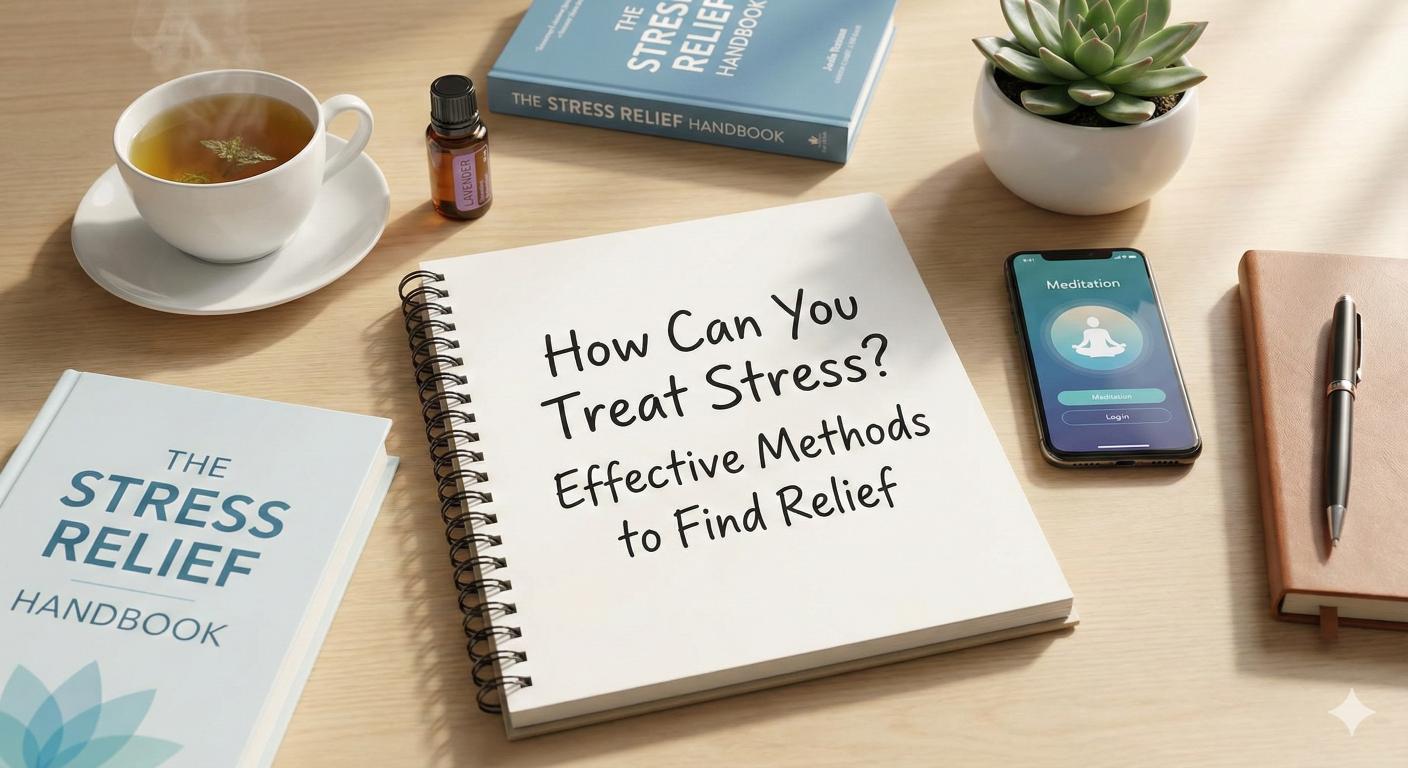How Behavioral Health Services Help with Work-Life Balance
Unlocking the Power of Behavioral Health for a Balanced Life

Introduction
In our fast-paced world, achieving a healthy work-life balance has become increasingly essential yet elusive for many. As individuals navigate the demands of both professional and personal realms, stress and mental health challenges often arise, impacting overall well-being and productivity. This article explores how behavioral health services, including therapy, counseling, and Employee Assistance Programs (EAPs), play a crucial role in enabling individuals to maintain and improve their work-life balance. Through practical strategies, mental health support, and organizational initiatives, these services provide the framework for a more fulfilling and harmonious lifestyle.
The Integral Role of Behavioral Health Services in Work-Life Balance

What is the role of behavioral health services in achieving work-life balance?
Behavioral health services, particularly through Employee Assistance Programs (EAPs), are instrumental in facilitating work-life balance. As many workers face mental health challenges like chronic stress and anxiety, these programs offer crucial resources to help manage these obstacles. EAPs typically provide confidential counseling, therapy, and strategies for coping with stress—ensuring that employees are equipped to handle pressures both at work and in their personal lives.
Moreover, EAPs focus on early intervention and stress management, which are essential for maintaining a healthy work-life dynamic. By helping individuals recognize their stressors and implement effective time management techniques, EAPs empower employees to establish boundaries between their work and personal lives. This is particularly vital as many workers struggle to detach from job-related stress, especially in a remote work environment.
Mental health resources and EAPs
The integration of mental health resources into workplace wellness programs significantly bolsters employees' abilities to cope with work-life balance challenges. EAPs emphasize not only the importance of seeking help but also foster an organizational culture that supports mental health awareness. With strong leadership backing these initiatives, employees can feel more comfortable accessing mental health resources without the fear of stigma.
Early intervention and stress management
Implementing early intervention strategies greatly reduces the likelihood of burnout, allowing for a more resilient workforce. Behavioral health services enable employees to understand when they are nearing stress thresholds and promote methods to alleviate those pressures before they escalate. By incorporating practices like meditation, journaling, and setting clear work-life boundaries, workers learn the tools necessary to foster a healthy balance, ultimately benefiting their overall well-being and productivity.
In summary, behavioral health services provide an array of support mechanisms that are essential for achieving and maintaining work-life balance, ensuring that employees can thrive both personally and professionally.
Enhancing Dynamics with Therapy and Counseling

How can therapy and counseling improve work-life dynamics?
Therapy and counseling can significantly improve work-life dynamics by equipping individuals with effective stress management techniques and enhancing communication skills, which are essential for balancing work and personal life.
By addressing mental health issues, therapy helps prevent burnout, characterized by emotional and physical exhaustion that hampers productivity and well-being. Counseling sessions provide personalized strategies to cope with work-related stressors, such as heavy workloads or conflicts, fostering resilience and adaptability.
Stress management techniques
Therapists often teach clients various techniques to manage stress effectively. These may include mindfulness practices, such as meditation and breathing exercises, which facilitate relaxation and improve focus. Additionally, learning effective time management strategies and setting boundaries can significantly alleviate stress levels, ultimately promoting a healthier work-life balance.
Communication skills improvement
Therapy also focuses on enhancing communication skills. By identifying and addressing barriers to effective communication, individuals can better express their needs and set boundaries. This opens up healthy dialogues within personal and professional relationships, enhancing collaboration and reducing conflict.
Preventing burnout
Burnout prevention is another crucial aspect of therapy. Counselors can guide clients in establishing routines for self-care and leisure activities. Prioritizing personal time and engagement in enjoyable pursuits not only rejuvenates one’s energy but also fortifies overall well-being, two vital components for sustained productivity. Ultimately, therapy empowers individuals to prioritize their mental health, leading to a more fulfilling and productive life both at work and at home.
Connecting Mental Health and Work-Life Balance

What is the relationship between mental health and work-life balance?
Mental health and work-life balance are deeply interconnected. Research indicates that a lack of work-life balance can lead to numerous mental health challenges. For instance, nearly 40% of full-time U.S. workers report working over 50 hours a week. This excessive workload significantly exacerbates issues such as depression and anxiety.
The stigma surrounding mental health in the workplace compounds these problems. Over 75% of employees avoid taking time off for mental health reasons, fearing potential repercussions at work. This avoidance not only impacts their mental health further but also contributes to decreased productivity and increased stress levels.
Poor work-life balance is linked to a wide range of adverse health outcomes. Employees experiencing imbalance may suffer from sleep disturbances, heightened stress, and burnout, all of which hinder personal well-being and workplace performance. Prioritizing mental health initiatives and fostering a supportive environment within the workplace are essential steps towards achieving a healthier work-life balance. This approach not only benefits individual employees but also enhances overall workforce well-being, promoting a more productive workplace culture.
Employee Assistance Programs: A Pillar for Balance

How can Employee Assistance Programs (EAPs) benefit work-life balance?
Employee Assistance Programs (EAPs) are a crucial resource for improving work-life balance among employees. They provide a variety of services designed to help individuals navigate the complexities of personal and professional life. One of the primary offerings of EAPs is confidential counseling that addresses mental health issues such as stress, anxiety, and depression, which are common challenges faced by today's workforce.
EAP services tend to be flexible, making it easier for employees to seek help when they need it without disrupting their work schedule. This adaptability encourages more individuals to utilize these services, effectively reducing the stigma associated with mental health care. Moreover, EAPs assist not only with personal stressors but also tackle workplace challenges, including conflict resolution and time management strategies.
Regular access to stress management resources is invaluable. EAPs equip employees with tools to minimize the effects of work-related stress, thereby enhancing job satisfaction and productivity.
Lastly, these programs significantly contribute to reducing absenteeism. By addressing personal issues before they escalate into larger problems, EAPs foster a more engaged and focused workforce. When employees feel supported, they are more likely to perform well and maintain a healthier balance between their work and personal lives.
In essence, EAPs establish a positive organizational culture while providing essential support, enabling employees to thrive both in and out of the workplace.
Frameworks for Stress Management at Work

What are some strategies for managing stress and maintaining mental well-being at work?
Effective strategies for stress management at work focus on five core areas:
Mindfulness Techniques
Practicing mindfulness can significantly reduce stress by fostering present-moment awareness. Techniques such as meditation, deep-breathing exercises, and progressive muscle relaxation help employees reconnect with themselves during hectic workdays and can lead to improved concentration and reduced anxiety.Healthy Lifestyle Promotion
A balanced lifestyle is fundamental to mental well-being. This includes:- Nutrition: Incorporating balanced meals helps sustain energy levels.
- Exercise: Regular physical activity, even short walks during breaks, enhances mood and reduces stress.
- Sleep: Prioritizing adequate sleep supports cognitive function and emotional stability.
Employers' Role
Employers play a crucial role in stress management. They can facilitate this by:- Creating dedicated stress-reduction areas within the workplace.
- Organizing regular wellness discussions that promote mental health awareness.
- Developing a Wellness Action Plan, assisting employees in identifying their stress triggers and advocating for necessary workplace adjustments.
Ultimately, fostering a supportive workplace culture that emphasizes mental health and encourages positive coping mechanisms is vital to reducing workplace stress and promoting overall well-being.
Boundaries and Time Management for a Healthier Lifestyle
What are some tips for setting boundaries and managing time to improve work-life balance?
To enhance your work-life balance, start by establishing clear priorities and allocating specific periods for work and personal activities. Setting boundaries is crucial; learn to decline additional responsibilities that may overwhelm you.
Consider delegating tasks whenever feasible. This not only lightens your load but also fosters teamwork and trust among colleagues. It’s equally important to take regular breaks. Stepping away from work allows your mind to recharge and mitigates burnout. Avoid taking work home, creating a physical and mental separation that preserves your personal time.
Building healthy relationships and seeking support from peers or mentors can empower you to navigate stress effectively. Practicing strong time management skills is vital, which involves understanding your values and organizing your schedule to reflect them. This proactive approach will set you on the path to achieving a healthier work-life balance.
Navigating Remote Work Challenges with Behavioral Health Support
What advice is there for addressing work-life balance challenges, especially in remote work settings?
To tackle work-life balance challenges in remote work environments, it's essential to create dedicated workspaces. This means designating a specific area in your home for work, which helps in establishing clear boundaries between work and personal life. Setting distinct work hours is crucial; this keeps work responsibilities from spilling into personal time and promotes a routine that facilitates better focus.
Prioritizing regular breaks throughout the workday is vital. Taking short pauses allows for mental rejuvenation and physically reduces stress levels. Engaging in self-care activities during these breaks, such as stretching or quick meditation, can significantly enhance productivity and emotional well-being.
Employers also play a key role in supporting their remote workforce. By offering flexible work hours, businesses enable employees to manage personal obligations alongside their professional responsibilities. Furthermore, emphasizing mental health resources, such as counseling and Employee Assistance Programs (EAPs), creates a safety net that employees can utilize when feeling overwhelmed.
Fostering an open communication culture also helps alleviate feelings of social isolation that remote workers may encounter. Regular check-ins by leaders encourage employees to maintain connections with colleagues, thereby enhancing team dynamics and support networks. Leaders should model healthy work habits, reinforcing the importance of setting work-life boundaries and promoting a culture of well-being that can ultimately reduce burnout and enhance job satisfaction.
Conclusion
Achieving and maintaining a healthy work-life balance is crucial for mental well-being and overall quality of life. Behavioral health services, including therapy, counseling, and EAPs, offer invaluable support, enabling individuals to navigate personal and professional challenges more effectively. By implementing practical strategies and fostering a supportive workplace culture, these services enhance the ability of employees to manage stress and separate work from personal life. As organizations increasingly recognize the importance of mental health initiatives, a balanced approach to work and life not only benefits individuals but also drives productivity and success at a broader level, paving the way for a healthier, more fulfilled workforce.
References
- Work-Life Balance | Limits and Boundaries for Wellbeing
- Work-Life Balance and Mental Health Support: The Role of EAPs
- Work Life Balance and Mental Health | Importance - AMFM Treatment
- 10 Strategies for Achieving Work-Life Balance in Behavioral Health
- Health and wellness in the workplace: Promoting work-life balance
- Work-Life Balance for the Win: Strategies for Managing Mental ...
- How Telehealth Supports Work-Life Balance for Clinicians
- Work Life Balance | Mental Health America
- Do Mental Health Clinicians Have a Good Work-Life Balance? - Teal
- Organizational Best Practices Supporting Mental Health in the ...
More Resources
A team ready to start your journey.
Get in touch — today.
We are a safe space – a haven for exceptional individuals to receive discreet, personalized, in-person treatment and care.
.avif)










